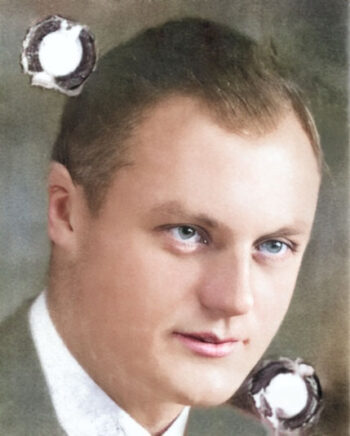Wirths, Eduard

Eduard Wirths (4 Sept. 1909 – 20 Sept. 1945), SS Obersturmbannführer, served as a German army physician in Norway and in the Soviet Union. After suffering a heart attack in early 1942, he was posted to the Dachau Camp for special training, then served briefly as garrison physician at the Neuengamme Camp starting in July 1942. In early September 1942, he was transferred to the Auschwitz Camp. His main task was to get the typhus epidemic under control that had been ravaging the camp since June/July 1942, killing one of Wirths’s predecessors (Siegfried Schwela) and rendering another unfit for duty for a long time (Kurt Uhlenbroock).
Upon discovering the catastrophic sanitary, hygienic and medical conditions at Auschwitz, Wirths urged and quickly convinced the Berlin authorities to take drastic measures with a huge special-construction program meant to remedy the situation. The program, which cost hundreds of millions of dollars in today’s currency, included installing proper toilet, wash, shower and delousing facilities, improving the camp’s drainage system, building a wastewater treatment plant, and expanding the Birkenau Camp to include a huge hospital section with more than 100 barracks for the treatment of sick and injured inmates.
His efforts were eventually successful in suppressing the typhus epidemic and other dangerous diseases, which gained him the admiration of the camp inmates – among them Hermann Langbein, who later became one of the most virulent orthodox Auschwitz propagandists. In a 1943 Christmas card for Wirths, Langbein, an influential inmate functionary at the time, wrote that Wirths had saved the lives of 93,000 inmates with his efforts, and that all Auschwitz inmates wished that he stayed with them for the next year. This praise by inmates finds a parallel in the praise Wirths received several times from his superiors for his unrelenting lobbying for the camp inmates’ welfare and well-being. That was his job, he did it well, and he was lauded by all sides for it.
As garrison physician, Wirths was in charge of all supplies of Zyklon B, and he had major influence on construction plans for anything involving medicine, sanitation and hygiene, including the crematoria.
The orthodoxy claims that the four crematoria at Birkenau were originally planned only as facilities to hygienically dispose of deceased inmates, but that these plans were changed in late 1942 to make these buildings serve primarily as mass-murder weapons using Zyklon B. At that time,
- Dr. Eduard Wirths was the head over Zyklon B supplies and all accessories, such as hydrogen-cyanide test kits, gas masks, filters etc.
- He decided which Auschwitz physician had to be on duty during inmate selections at the railway ramp or in the inmate infirmaries inside the camp.
- He defined the criteria according to which what type of inmate was to be selected for which fate.
- He was one of the persons in charge of planning the functionality of the crematoria – which is significant, given that Wirths’s office and laboratory were located in Crematorium II beginning February 1943.
Therefore, after camp commandant Rudolf Höss, Dr. Wirths would have been the second person in charge, bearing primary responsibility for the claimed mass murder of some one million Jews at Auschwitz using Zyklon B and other claimed murder methods (such as phenol injections). The camp’s inmate functionaries, foremost Hermann Langbein – who was Wirths’s secretary – would have been keenly aware of this. It is thus incomprehensible that Langbein or any other inmate of influence would have written the above-mentioned Christmas card in 1943, if by that time some half a million inmates had been killed under Wirths’s control and supervision.
The documentation on Wirths’s activities at Auschwitz is comprehensive, and all of it is exclusively benign and in the best interest of the inmates.
After the war, Dr. Wirths was arrested by the Allies and charged with the murder of four million inmates. It is unknown what they did to him while he was in their custody, but it was enough for him to commit suicide after a few days in prison – at age 36.
(For many more details, see Mattogno 2016a, esp. pp. 219-276; 2016d.)

You need to be a registered user, logged into your account, and your comment must comply with our Acceptable Use Policy, for your comment to get published. (Click here to log in or register.)